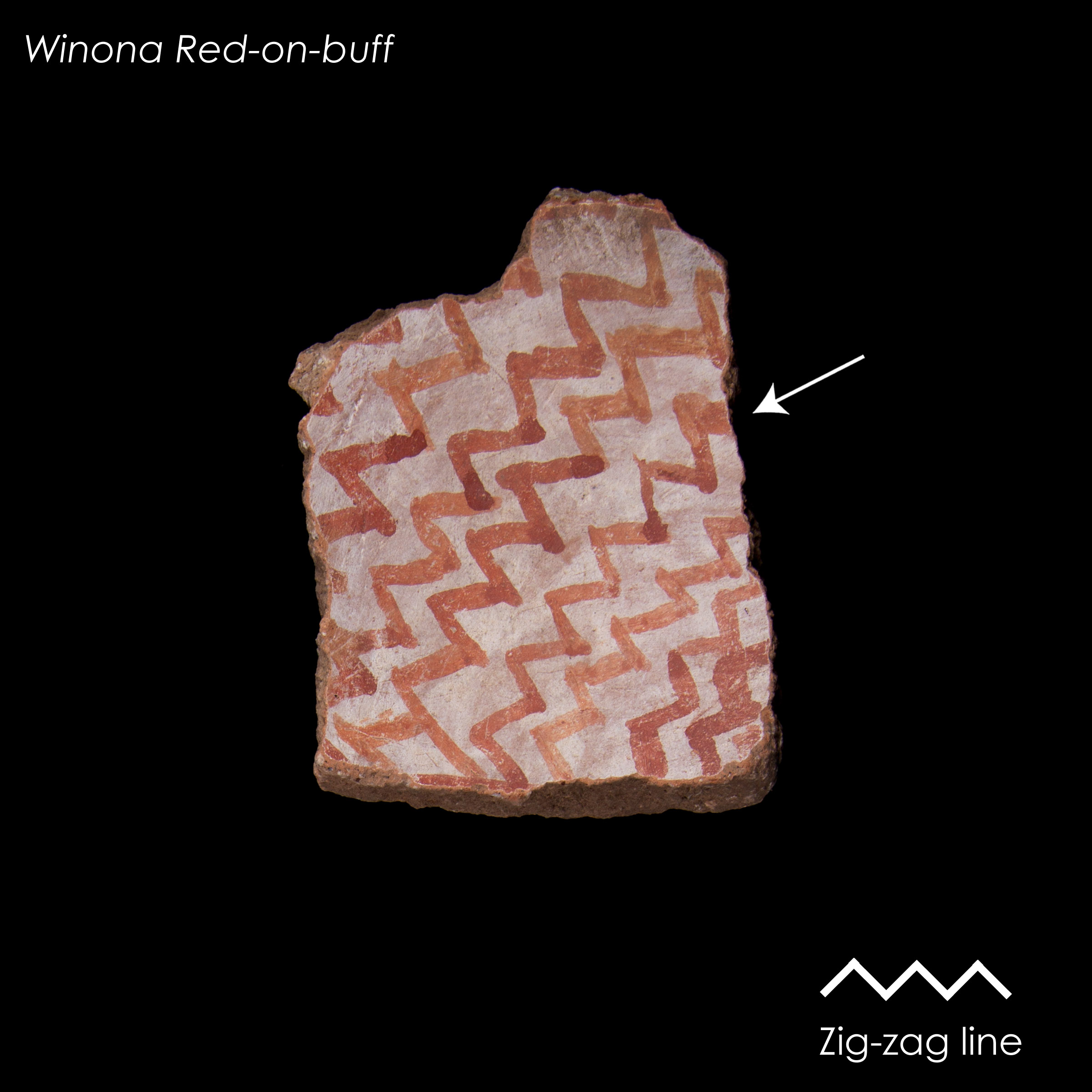
Winona Red-on-buff sherd with zig-zag line elements. Click the image to open the Winona Red-on-buff gallery.
Like Coconino Red-on-buff, Winona Red-on-buff is a type of Coconino Buff Ware reminiscent of Hohokam Buff Ware pottery made in central and southern Arizona, but limited in distribution to the Walnut Canyon area of northern Arizona.
Archaeological Culture: Sinagua
Date Range: A.D. 1050-1150.
Construction: By paddle and anvil.
Firing: In a oxidizing atmosphere.
Core Color: Black, gray, or buff, tending to brick-red near the outer surface (jars), or brick-red.
Temper: Abundant coarse light-colored angular fragments (gray, white, or buff) (Variety 1), or abundant grains of black volcanic sand (Variety 2).
Surface Finish: Interior surface generally anvil marked and unpolished; exterior surface impacted, sometimes scraped, and frequently wiped.
Surface Color: Exterior (jars), reddish-brown to light buff; interior (jars), dark gray, buff or reddish-brown.
Forms: Jars, censers.
Vessel Thickness: 4.9-9.2 mm; greatest individual range recorded, 2.5 mm; average thickness (ten sherds), 6.5 mm (sherds with Variety 2 temper are thinner than sherds of Variety 1.)
Decoration:
- Paint: Bright red, dull red or purplish red.
- Pigments: Iron oxide mineral paint.
- Design: Elements consist of serrated barbs, thin parallel lines, often wavy or jagged; fringe attached to lines; hatching, with the hatching areas often doubly capped with jagged lines; both rectilinear and curvilinear scrolls.
Comparisons: Types of Hohokam Buff Ware all have different temper. Coconino Red-on-buff differs in that it definitely has a slip.
Compiled from the following sources:
Colton, Harold S. (1955) Pottery Types of the Arizona Strip and Adjacent Areas in Utah and Nevada. Museum of Northern Arizona Ceramic Series No. 1. Flagstaff, Arizona
O’Hara, Michael. (1998) Red-on-buff North of the Mogollon Rim: A Comparative Analysis and Cultural Assessment. Masters Thesis. Northern Arizona University. Flagstaff, Arizona.
Compiled by:
April Peters, Northern Arizona University Anthropology Laboratories.
